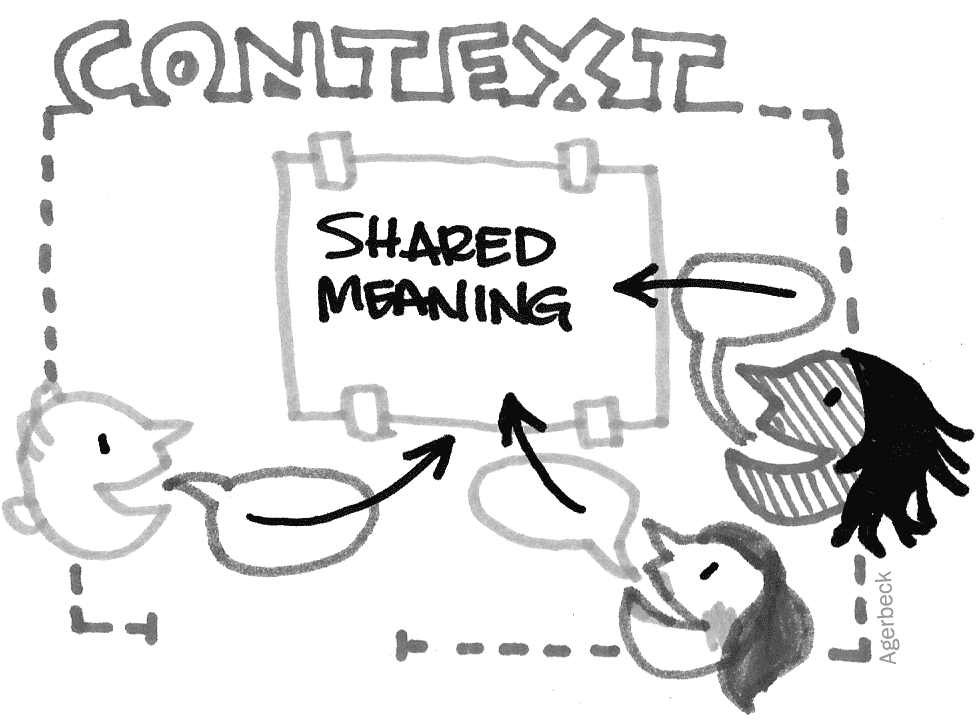Think in Levels | excerpt from The Graphic Facilitator's Guide

Not all information lives on the same level. Your charts should be organized to clearly reflect both main topics and their supporting points. Chunking and Connecting feed into this. Later, you’ll use The Essential Eight to draw how each point clearly relates to the others using color, line, scale, shapes and iconography.
Thinking in layers means thinking critically to organize what is being said in the meeting, to help everyone make more meaning of their work. As we said in Listen with Outsider Ears, everyone is equal. Not every idea is equal. There is a tension here.
Most of this book lives in the tidy isolation of an imaginary meeting. It is useful to temporarily give a broader context.
I’m going to grossly over-summarize my Art History education to make a point. And this goes far beyond fine art. As I prefaced in I Am Your Guide, I am a practitioner, not a scholar, so I hope you’ll cut me some slack, and forgive me no citations.
In the late-19th Century, Modernism made a few people (mostly old, rich, white men) the only voices worth listening to. There is One Truth.

In response, Postmodernism arose mid-20th Century, giving voice to everyone (young and old, any class level, any race or background, any gender or sexual orientation). Truth is Subjective. There are Many Truths.

Postmodernism has been incredibly empowering, putting everyone on egalitarian, equal footing. It’s a fantastically powerful thing that we have access to different perspectives and can speak up for ourselves and hear all these different voices.
The consequence is that there are now infinite voices out there to listen to— amplified by new technologies. It is that firehose of information, channels, user comments and status updates we are soaked with daily. We are in a transition into Post-Postmodernism or whatever we’re going to call it. (I enjoy calling it PoPoMo). We struggle to understand all the inputs we receive and how to make sense of them.
Postmodernism tells us every voice is valid. And each is.
AND we must organize these voices, understand them in context, filter them for specific uses and find voices and sources we trust.
In this transition into the 21st Century, we hold onto the values that all voices are equal, while struggling with how to listen and understand all those voices at once. We need to develop PoPoMo tools to listen to everyone, understand context, think critically and organize information to make it usable.
All those voices aren’t useful if we are exhausted by them and we just plug our ears.
The Graphic Facilitation field grew up alongside Postmodernism. First wave graphic facilitators hold the democracy and equality very strongly, resulting in charts of ideas all living on one level. Forty years into this work, I posit that we live in a world that needs the next wave of graphic facilitators to incorporate more organization and synthesis into their work. It is alright to separate the input from the person who said it. We can add structure to these inputs without invalidating the sources. In fact, the structure helps all the participants see their perspectives and how to relate to each other. As graphic facilitators, we can sort, rank and connect ideas without devaluing them. In fact this sorting, ranking and connecting adds value to the meeting itself by creating more shared meaning.

I believe graphic facilitation is a 21st century role that helps us navigate this complex world we live in. Graphic facilitation is an adaptable, accessible and powerful PoPoMo tool. Organizing and synthesizing skills are rarely taught, are very difficult to teach, and hadn’t been supported in the Postmodern context. If you feel uncomfortable with these skills, know that they are new territory for most people. But they are, alongside critical thinking, very much in demand.
We’ll now return to our tidy little imaginary meeting, after this context setting. We can believe both that all voices are valid and that not all ideas are equal.
We build on our abilities to listen, distill, chunk and connect. Once we can evaluate, sort, scale and organize ideas apart from the people who share them, we can Think in Layers.


